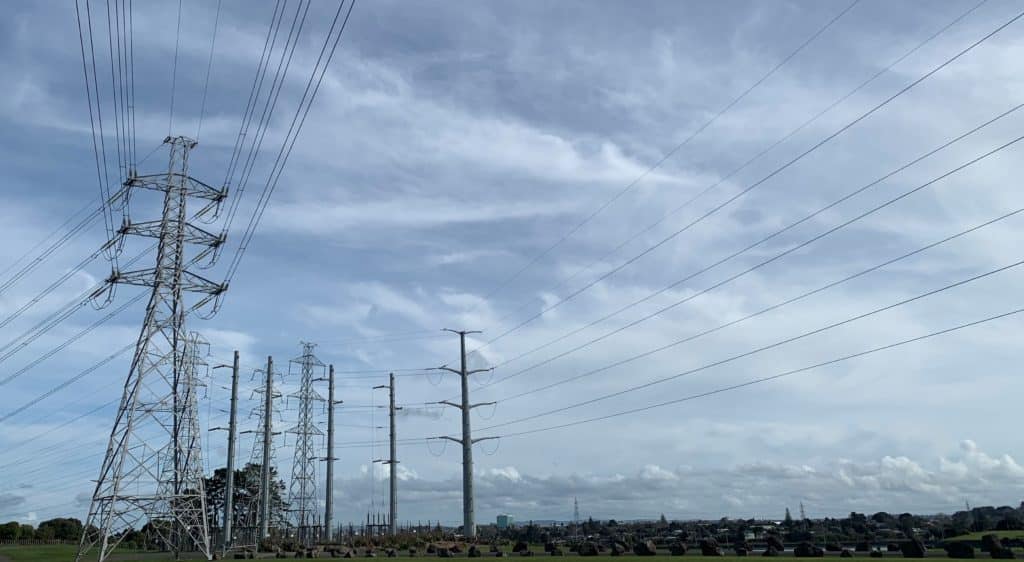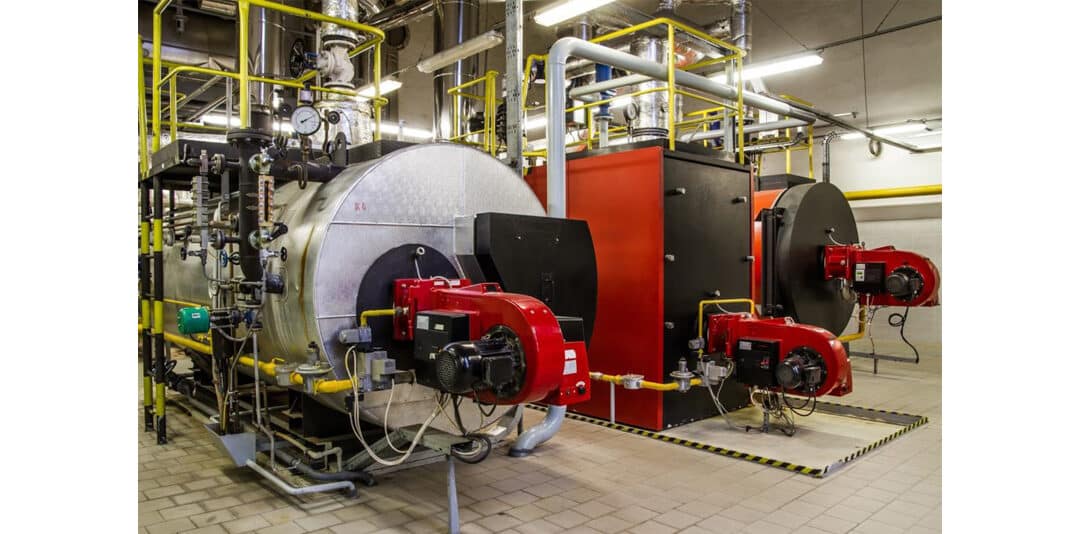
by chris | Jan 9, 2020 | Energy
Research shows that using low-carbon energy solutions can improve your reputation – helping make the case for sustainable energy innovation.
Deloitte recently published The Global Millennial Survey. This reinforced a number of other surveys that concluded that brands with a strong corporate social responsibly and sustainability plan will attract a higher caliber pool of prospective employees and a large range of engaged customers.
42% of those surveyed stated that they would start and or deepen a relationship with business who has products/services that positively impact the environment/society whereas 38% said they would cease or reduce their relationship with businesses who has products that negatively impacted the environment/society.
In business, it’s often said that reputation is slowly built, but quickly lost. That’s why, as a successful company, it’s vital to take a strategic view of your brand – to avoid the damage that can result from being on the wrong side of fast-moving public debates.
The below was recently posted by Centrica Business Solutions and is republished with permission.
Globally, there are few issues being currently debated more than the environment and climate change. In response, many organizations are looking to implement technical low-carbon energy innovations – including solar power or electric vehicles – as well as less tangible innovations, such as reshaping business strategies to more closely reflect environmental concerns.
When you’re considering investing in any of these approaches, it’s vital to understand the wider implications they may have on your business – both positive and negative.
In particular, it’s clear they can have a significant impact on how your brand is perceived by customers and shareholders. Our recent report, Distributed Energy Future Trends, shows that decision-makers recognize that low-carbon energy solutions result in reputational benefits for businesses.
According to our research, as many as 30% of companies we surveyed say that investing in energy technology results directly in a better company reputation – up from 24% in 2017. That’s a big rise in just two years and shows that energy technology, an increase in environmental responsibilities as an organizational priority, and brand perception are closely linked.
Strategy linked to brand
In the past year alone, 36% of the businesses we surveyed changed their brand position to be more environmentally friendly. This shows they understand the importance of demonstrating sustainability credentials.
Of course, to be effective in the long term, any change in brand positioning should be genuine. Customers, employees, commentators and regulators are all rightly suspicious of brands making unsubstantiated or misleading claims about their environmental friendliness, and their perception of your brand may be different from the crafted positions you take.
This means that, ideally, the drive toward sustainability should be strategic – with a combination of economic and environmental drivers the focus for success. Our survey shows that 86% of companies think ‘sustainability’ has both economic and environmental dimensions. It’s clear that organizations cannot simply talk about the importance of environmental responsibility – their words need to be backed up by clear and decisive action.
There are signs that this is happening. In fact, social and environmental responsibility is steadily rising up the strategic corporate agenda, and our research found that the only two factors are considered more important: efficiency and financial performance. What’s more, the fourth most important item on the corporate agenda was reported to be compliance with legislation and regulation – which is, in itself, a critical part of reputation management.
Practical impacts on stakeholders
There are a wide number of ways in which sustainable energy innovations can enhance your brand perception, and these are largely dependent on the strategy you opt for.
Invest in sustainable transportation technologies, such as workplace charging points and an electric vehicle fleet, and this could start to have positive impacts not only on employees who use them, but on the local community too. Already, half of fleet owners have at least one electric or hybrid vehicle, our research shows.
Solar technologies, too, can be a visible demonstration of your environmental commitment, and can combine with battery storage for economic and resiliency benefits too. Rather than relying on traditional energy sources, you’re able to generate your own energy onsite, store this generated energy in a battery for use during times of high grid demand or grid interruptions, and may even increase profitability by reducing expenses.
Innovative energy technologies can improve brand perceptions in indirect ways, as well. According to our research, the issue of energy security and resilience is now a top four risk for companies. It’s easy to see how a power failure at a critical site or data center could cause damage to your brand. Yet solutions such as battery storage and backup generators could mitigate these issues as part of a sustainable energy strategy. This will keep you ‘always on’ and safeguarded from commercial, regulatory and market risks.
Organizations with strong future growth prospects are those that have a clear strategy for how energy can contribute to their company values. In fact, one-third of organizations who expect their annual revenue to grow by over 20% in the next five years have made a clear link between sustainable energy use and their brand image and company values.
Find out more about how Total Utilities can help you invest in sustainable energy innovations that can have a positive impact on your organisational competitiveness, environmental credentials, brand perception, and carbon emissions.

by DavidSpratt | Dec 11, 2019 | News, Planet Spratt
Behind the times in 2019. How to kill friendships and infuriate younger colleagues.
Each Christmas for the last three years I have taken the opportunity to mock colleagues, businesses, politicians and friends in the guise of a bit of festive fun. For me 2019 was a year of progressive transition to a new generation of leaders at work. This warrants a look in the mirror and into the mind of an old guy inadvertently keeping the glass ceiling firmly on top of our young talent.
“I just told you my great idea. Why are you being so difficult about it?”
Young people can be frustrating at times. Just because it’s the first idea that came into my head doesn’t make it wrong. Years of experience count for a lot when it comes to the important calls.
A conjoint Bachelor of Commerce and Engineering with First Class Honours doesn’t mean anything in the real world. It’s all theory, no practice. Degrees are for nerds.
“I can’t delegate. Last time I did that you did it all wrong. It’s quicker to just do it myself.”
Do it yourself and do it right that’s what I say. Young people are in such a rush, they are always making mistakes. You can see from the huge smiles on their faces just how relieved they are when I jump in with a few helpful suggestions. Mentoring is so satisfying. If only people would listen more.
“My Tesla was keyed in the supermarket car park. What did I do to deserve that?”
I don’t know what you are complaining about. We did it tough too. Interest rates were 25% when I was your age. I know a million-dollar mortgage sounds daunting, but you must start somewhere. Soon you will own a bunch of rentals just like me. It’s just a question of putting in the hard yards.
Oh yes. Just a reminder that the wife and I are away in Queenstown next week for a bit of bungy jumping and jetboating. It will be such a relief after the hustle and bustle of the Rugby in Japan. That final was amazing. Nothing compares to being there live. You really should try it.
“I know I said Tuesday, but other priorities came up. How about a week Friday?”
Everyone is in such a hurry these days. How can it be a bad thing to take an afternoon power nap? Grab me a coffee will you?
It’s PC gone mad I tell you
Spare me your mamby pamby, trendy lefty, climate warrior, sustainable vegetarian clap trap. Global warming is a myth. Haven’t you read the latest report from the oil and coal industry’s expert panel on climate denial?
“That’s enough of me talking about me. Let’s talk about you. What do you think of me?”
Maybe that story of how I was involved in building New Zealand’s first private “fibre optic network” (imagine my fingers in the quote position) is getting a little tired? What about the one about when I once closed a deal for a million dollars by saying nothing to the client and just listening? Perhaps I should do more of that?
It should be the fate of baby boomers to spend eternity in hell repeating work war stories and tales of the good old days. You can almost taste the resentment as we point out millennials inadequacies. They will surely realise how wrong they are after a few more years as understudies.
Merry Christmas and Happy New Year readers. Stay safe and rest well. Try a power nap. They are really refreshing!

by DavidSpratt | Nov 5, 2019 | ICT
Total Utilities is proud to have been nominated as a finalist in the 12th annual Microsoft New Zealand Partner Awards. These awards reveal the capability and influence that Microsoft Partners have in empowering customers to create real change and value.
As a business we have been known for a number of years for vendor-independent business consulting which enables our customers to make informed and contestable decisions in relation to their migration to Cloud computing.
Once the customer embarks on that journey it is crucially important to have the right governance in place to control costs and realise the value promised in the original business case.
Total Utilities has developed analytics that ensure our clients gain the value from their cloud environments and provide insights to help save money.
“Being finalists for the 2019 Microsoft Partner ‘Optimising Operations Award’ is a significant milestone for Total Utilities as it means we are now also gaining recognition for our independent, innovative and inexpensive Cloud FinOps service which provides that financial governance.”
– Kelvin Sargeant

by DavidSpratt | Oct 22, 2019 | Energy
Our national grid pricing needs solutions. And after 10 years of pondering its navel, the Electricity Authority (EA), the Government agency charged with ensuring an efficient and effective electricity industry, plans to release a paper that may or may not gain industry consensus and may or may not actually be the right answer.
A decade in, the EA claims it is past the point where it is seeking an industry consensus, and advises that “you’ll have to show a factual error in our assumptions to change our views.”
This paper attempts to address the question, who pays how much for the right to access the electricity transmission backbone that is the national grid.
Just how we derive economic efficiency by perpetuating monopolies, stifling innovation and transferring the costs of transmission to regional small businesses and consumers, is beyond me.
This backbone is owned and operated by a Government-owned monopoly called Transpower, and connects our generation assets to the whole country.
The trouble with essential monopolies like the national grid is that they exert enormous political influence. Combine this influence with that of other essential monopolies such as the electricity generators who own our hydro dams, and massive energy consumers like the Bluff aluminium smelter, and the EA’s findings are wholly predictable.
This draft report, citing “economic value created”, suggests transmission costs be moved away from certain major users – notably the Bluff aluminium smelter – and should instead fall most heavily on domestic consumers and small businesses farthest from the point of generation. Meanwhile the hydro dam owners (the generators) will continue to utilise the transmission network without paying anything like the true cost of doing so.
When justifying their recommendations, the gurus at the Electricity Authority have estimated net economic benefits to all parties involved in the electricity market, of between $200 million and $6.4 billion by 2049. There are clear signs of an agency that has lost track of the most basic financial disciplines, when they can seriously suggest that a business case benefit that has an estimated range of $6.2 billion over 30 long years is somehow rational rather than looking suspiciously like a complete guess.
Virtually all these barely-credible benefits are assumed to come via increases in market efficiency. Just how we derive economic efficiency by perpetuating monopolies, stifling innovation and transferring the costs of transmission to regional small businesses and consumers, is beyond me.
Disincentives to use the national grid
The EA’s proposed pricing mechanism builds in disincentives for those seeking to find alternative methods of transmitting, storing and using electricity. The EA will do this in the following two ways:
- By offering special discounts to people considering using innovations such as battery and solar to avoid using the grid. These discounts will be funded by transferring these costs to other consumers (in other words, not by reducing Transpower’s profits); and
- By reducing peak load pricing. This is the mechanism whereby we pay more for electricity transmission at times when the grid is most heavily used: think winter cold snaps and dinner time. Peak load pricing offers a price incentive to those who want to store and use their own electricity at a time when it is most expensive on the national grid. No peak load pricing, no incentive to innovate.
The national grid was bought and paid for over decades by all the taxpayers of New Zealand. This asset was designed to reliably transport one of our most essential services, electricity, and to share the costs evenly to the benefit of all.
Perhaps the Electricity Authority should be paying more attention to mechanisms and policies that have seen electricity prices soar over the past two decades, instead of continuing this futile, decade-long attempt to fix a transmission pricing problem that didn’t exist in the first place.

by DavidSpratt | Oct 17, 2019 | News, Planet Spratt
This isn’t an easy article to write. I am over 60 years old and have had a wonderful, successful life full of variety, excitement, joy and challenges. Throughout, I have seen myself as a solid kind of person with an optimistic view of the world and a generally even temperament. Now I find myself admitting to the world that I am not bulletproof after all.
A few weeks ago, I was juggling some pretty big issues at work, at home and in the political realm. That’s not unusual in my world, and for many of us in business this is very much part of our day-to-day lives. The difference this time was that I began to feel overwhelmed by the enormity of it all.
My symptoms were a mixture of shortness of breath, heart palpitations, anxiety and if I am honest, no small sense of panic. Just like when I get the man flu, I retreated into my mental man cave and hid while I ignored my beloved’s repeated question, “Are you feeling okay?”
My colleague and friend, Richard, recently spoke to me about the deep responsibility he feels for the 11 families that rely on our business’s continued success. He spoke of the need to put food onto the tables of these families and our obligation to provide a safe and supportive environment for everyone.
Thousands of us also carry this responsibility and willingly accept the burden that comes with it. Leadership can be a very lonely place, though. If we are taking care of all those around us at home and at work, just who do we turn to when we need support?
Admitting need
My first step was to summon up the authenticity to tell my wife how I was feeling. Before I spoke, I thought she would freak out and take on all my fears of inadequacy, failure and ultimate doom (yes I was really feeling sorry for myself that day). Instead, she just listened and reassured me and held me in her arms as I spoke, possibly for the first time in years, about my deepest fears. Then she insisted I do two things:
- Talk to my doctor
- Talk to someone I trusted
These were, not surprisingly, hard conversations, but nowhere near as hard as I thought they would be.
I am now practicing using some tools that I have been given to help me handle the inevitable stressful situations that arise in my daily life as a husband, father, grandfather, company director and elected trustee. I find myself living in the moment more. I play with my grandsons more often and say, “Yes,” to new experiences.
The tools give me the strength to lead when I feel alone, and the peace to accept that I am not actually perfect after all. It’s a good place to be.
Never too old to suffer
Running or owning businesses, leading teams or just being a loving partner or parent can be tough. We do it because we get satisfaction from what we do and because we love those who are closest to us. On occasions, though, the responsibilities can be heavy, and the challenges can prove to be very difficult to overcome.
Everyone deals with stress in their own way and it turns out that even a 60-year-old needs to learn new tricks sometimes.
Readers may be having all sorts of responses to this article. I usually like to keep it light and to focus on the nerdy technical things that I enjoy so much.
I do have one question though. Are you feeling okay?

by RichardGardiner | Aug 21, 2019 | Energy
Most of us now agree that climate change is all too real and we therefore all need to do something about it, sooner rather than later.
However, some impulsive political changes in the past 18 months, like unilaterally banning all new offshore oil and gas exploration, can be environmentally counter-productive. For example, NZ coal usage in 2018 was the highest for a decade! Undoubtedly, this is a decision our political leaders didnt want to see happen.
Wood biomass however is a great renewable resource and therefore represents an important and growing energy solution.
At this time, NZ needs a genuine cross-party accord on the best way to tackle climate change, much like the superannuation accord back in the 1990’s. The superannuation accord worked well and served to de-politicise a potentially highly contentious area. A similar approach is needed now.
Richard Gardiner – Managing Director of Total Utilities
The following was a recent press release from Azwood Energy. biomass
Azwood Energy welcomes the Interim Climate Change Committee’s “Accelerated Electrification” report, which investigated the potential of electricity in greenhouse gas reduction. Azwood Energy agrees with the Committee’s view: “The challenge is clear – it is not so much about reducing emissions from the generation of electricity in a narrow sense, but it is about using low or zero-emissions energy to fuel the economy.”[1]
Whilst we find its investigation into electrifying our vehicle fleet commendable, we question whether the Committee’s reliance on the wholesale electrification of process heat is an outcome that truly promotes carbon neutrality and greenhouse gas emission reduction.
Azwood Energy is of the view that the increased utilization of woody biomass, a renewable, carbon-neutral energy source, in the transition from fossil fuel use in process heat makes sense, both economically and environmentally.
Energy expert, Dr. Martin Atkins,[2] has noted that “Biomass will play a vital role in providing process heat, particularly in producing process steam for medium to high process temperature demands. Biomass will be the lowest cost fuel switching option by a large margin when compared to electricity.”[3] He notes that complete electrification of process heat demand is not economically feasible.
Process heat needs are highly-situationally dependent and site-specific. However, from an operational and Capex perspective, high temperature hot water and steam requirements are best met using biomass as a fuel source in place of coal or diesel.
It seems big players in the industry agree. A video was released for the Climate Leaders Coalition showcasing Fonterra Brightwater’s switch to co-firing with biomass.[4] Speaking, in May, at the New Zealand Minerals Forum, Tony Oosten, Fonterra’s Energy Manager, noted that capital outlay and fuel costs for new wood versus coal boilers are now the same, and the viability of wood fuel has been proven in their Brightwater pilot.[5]
He explained Fonterra’s cheese plants use lower temperatures and can be run on electric technologies. Oosten says milk-drying plants prove more complex, (given their mixed high-heat requirements), but indicated new plants will be designed to meet their low heat energy requirements with electricity, allowing biomass-fueled boilers to be used for higher temperature requirements. Oosten says electrode boilers may be used for peak loads as they are more responsive than wood boilers, but they are twice as expensive to run as current systems.
Oosten raised issues of wood fuel supply, however, stating, based on the locally available supply in each region, Fonterra could access 15 megawatts of wood into each of its 32 manufacturing sites. Given Fonterra has now put a stop to installing any new coal boilers or increasing capacity to burn coal,[6] their energy requirements, 40% of which is currently met by coal, are set to supercharge demand for wood fuel.
More recently, French multinational food-products corporation Danone announced they would invest $40 million to convert their Balclutha milk drying plant to 100% biomass, cutting CO2 emissions by 96% or 20,000 tones per year.[7]
Brook Brewerton, General Manager of Azwood Energy, welcomes this, stating that the current constraint in demand is at the heart of stated perceptions of constrained supply. He says there is ample forestry residue left unutilized on hillsides and the commercially unproven fixation on industrial electrification is hampering the switch to biomass fuel and confusing the low-emission messaging.
Azwood Energy sees key areas of this report’s findings as an exacerbation of the problem. The ICCC should encourage thermal heat plant users to firstly reduce energy demand, secondly reduce the low-temperature heat demand on boilers and then encourage the feasibility of fuel switching to biomass for high-temperature water and steam.
Biomass for high-temperature water and steam is the most cost-effective option, at about one-quarter of the cost to produce steam, when compared with electricity, and does not require a huge investment in electrical networks and infrastructure.
Until increased demand ramps up the supply chain logistics, however, the perception of scarcity will continue. Azwood Energy is poised to scale their operations at viable sites across New Zealand and has been commercially supplying biomass to large heat plant systems for almost 20 years.
Scion has reported that there is sufficient biomass in New Zealand to replace in the order of 15PJ of coal consumption with its associated GHG emissions reductions.[8] The Bioenergy Association states there is potentially enough biomass available from plantation forestry to replace 60% of coal used in existing heat plant over the next 30 years. It notes that the biomass fuel market is under-developed because the current demand for wood fuel is low, but that “there are enough suppliers with commercial and technical capability to expand supply if demand for wood fuel increases consistently and in an orderly manner”. [9]
Brewerton notes that the recoverability of wood energy in the scenarios underpinning the Scion and Bioenergy Association data is conservative, and not based on 17 years of residue recovery and methodology improvement. “There is far more out there if the market is willing to pay for it. Recoverability modeling is on the low side, but it is a good place to start.”
Azwood Energy eagerly awaits the PHiNZ report due to be released later this year by MBIE, which addresses process heat directly. It is hoped the regulatory and policy settings changes it advocates will provide the priority for wood fuel it deserves, as a proven, economically viable local energy source with both up and downstream environmental benefits.
[1] “Accelerated electrification” at p 13. https://www.iccc.mfe.govt.nz/assets/PDF_Library/daed426432/FINAL-ICCC-Electricity-report.pdf
[2] Dr Martin Atkins, Senior Research Fellow with Waikato University’s Energy Research Group, has advised some of New Zealand’s most iconic companies on their path towards lower emissions, from dairy giant, Fonterra, to pulp and paper processor, Oji.
[3] Dr. Martin Atkins submission to the Productivity Commission’s Low-emissions economy, https://productivity.govt.nz/sites/default/files/sub-low-emissions-361-martin-atkins.pdf
[4] CLC story – Fonterra Brightwater Biomass Burner https://www.youtube.com/watch?v=DgVc18nE-AA
[5] http://www.scoop.co.nz/stories/BU1905/S00909/plan-needed-for-competing-wood-demands-fonterra.htm
[6] https://www.fonterra.com/nz/en/our-stories/media/no-new-coal-boilers-for-fonterra.html
[7] https://www.stuff.co.nz/business/farming/114603715/danone-to-cut-carbon-emissions-at-balclutha-plant-to-zero
[8] Scion submission to the Productivity Commission’s Low-emissions economy, https://productivity.govt.nz/sites/default/files/sub-low-emissions-67-scion-446Kb.pdf
[9] https://www.bioenergy.org.nz/documents/resource/Information-Sheets/IS32-GHG-reduction-using-wood-energy.pdf









